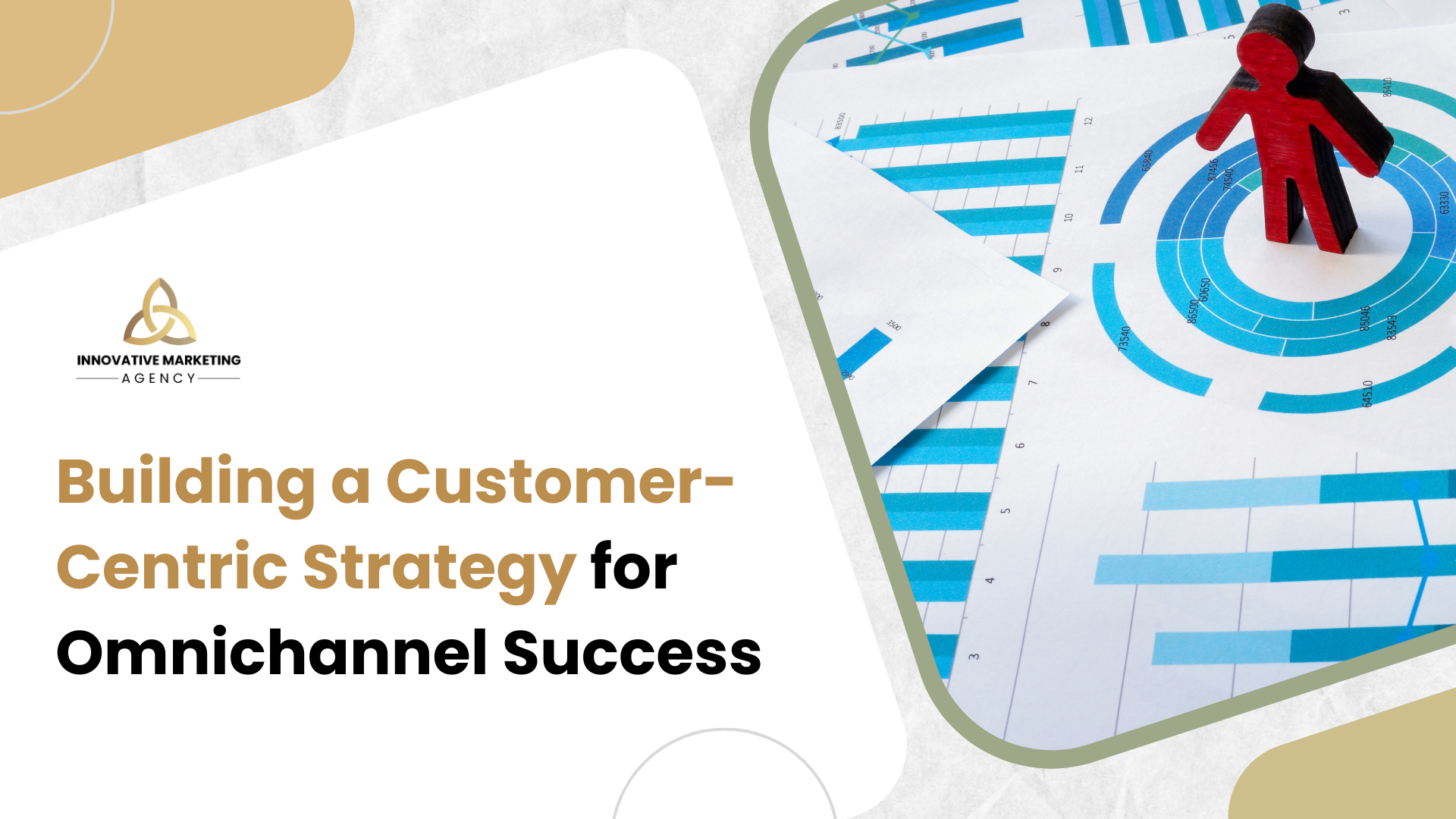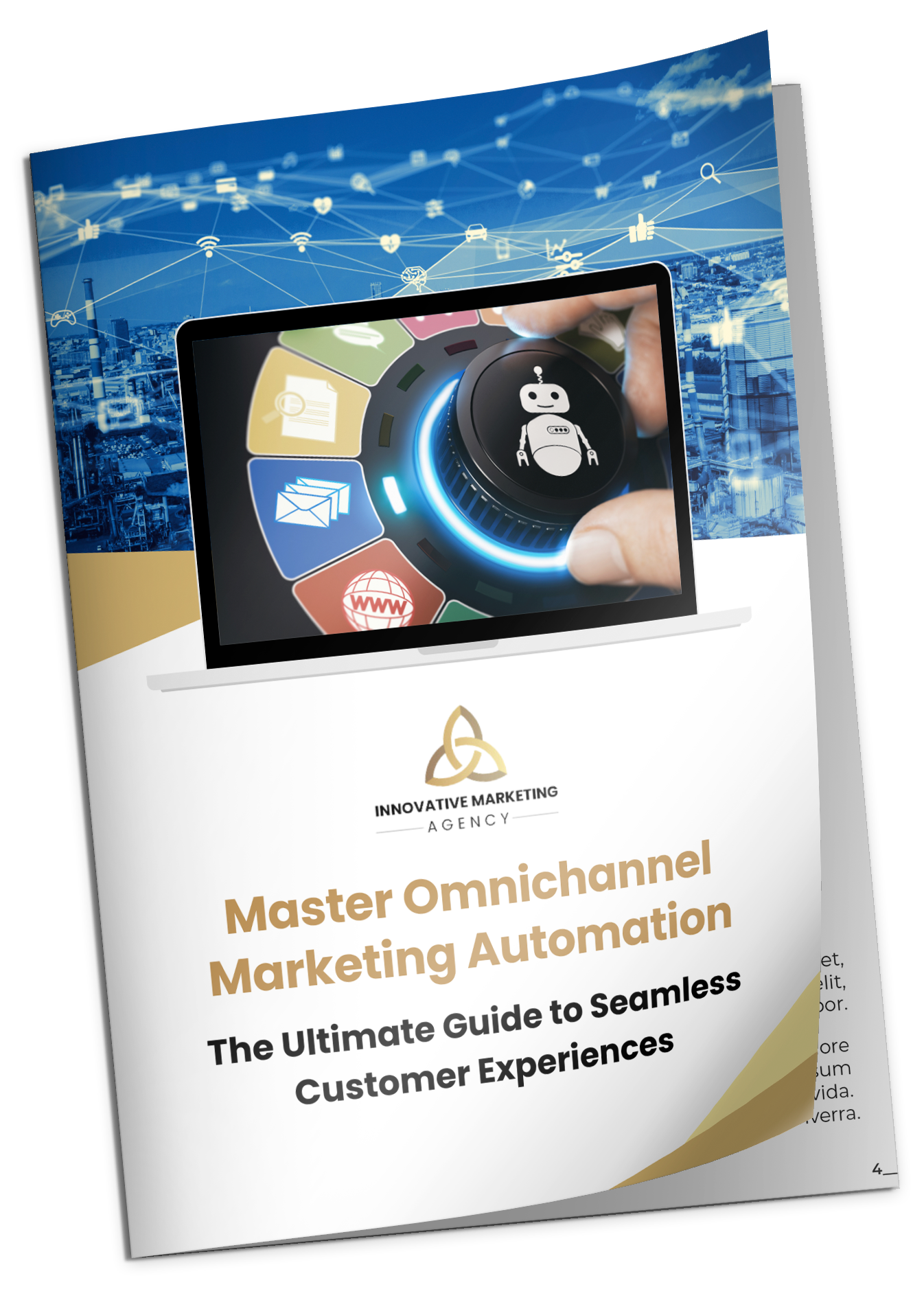Watch The Journey
BLOG
Building a Customer-Centric Strategy for Omnichannel Success
Friday, August 31, 2024
Jeremy Coates

Introduction
In today’s rapidly evolving digital landscape, businesses face an increasing challenge: how to meet the ever-growing expectations of customers who interact with brands across multiple channels. Customers are no longer just looking for great products—they’re seeking seamless, personalized experiences that cater to their individual needs and preferences. This shift has made it imperative for businesses, especially entrepreneurs, to adopt a customer-centric strategy that spans all channels, creating a unified and consistent brand experience.
In this guide, we’ll explore how to build a customer-centric strategy that ensures omnichannel success. You’ll learn the key principles behind this approach, practical steps to get started, advanced strategies to refine your methods, and how to avoid common pitfalls. By the end of this guide, you’ll be equipped with the knowledge and tools to elevate your brand’s customer experience, driving loyalty and growth.
Understanding the Basics of a Customer-Centric Strategy

What Is a Customer-Centric Strategy?
A customer-centric strategy is a business approach that places the customer at the heart of every decision, process, and interaction. Rather than focusing solely on products or services, this strategy emphasizes understanding and fulfilling the needs, wants, and expectations of the customer at every touchpoint. In an omnichannel context, this means ensuring that whether a customer engages with your brand online, in-store, via mobile, or through social media, they receive a consistent and personalized experience.
Why Is This Important?
The importance of a customer-centric strategy cannot be overstated in today’s market. Customers have more choices than ever before, and they are quick to switch brands if their expectations aren’t met. According to a study by PwC, 73% of consumers say that customer experience is a key factor in their purchasing decisions, and 32% of all customers would stop doing business with a brand they loved after just one bad experience. For entrepreneurs, this means that delivering a superior customer experience across all channels is not just a competitive advantage—it’s essential for survival.
Key Concepts in Customer-Centric Omnichannel Marketing
Customer Journey Mapping: This involves visualizing the various stages a customer goes through when interacting with your brand, from awareness to purchase and beyond. Understanding this journey helps you identify key touchpoints and opportunities to enhance the customer experience.
Personalization: Tailoring content, offers, and interactions to individual customers based on their preferences, behaviors, and previous interactions. Personalization is crucial for making customers feel valued and understood.
Channel Integration: Ensuring that all customer-facing channels—whether online, in-store, mobile, or social media—are integrated and work together to provide a seamless experience. This requires aligning messaging, data, and customer service across all platforms.
Data-Driven Decision Making: Leveraging customer data to inform decisions and strategies. This includes tracking customer behaviors, preferences, and feedback to continually refine and improve the customer experience.
Understanding these stages and how they interconnect is the first step in creating an effective sales funnel. With this foundation, you’re ready to move on to the practical steps of building your funnel from scratch.
Getting Started with a Customer-Centric Strategy

Step-by-Step Guide to Building Your Strategy
Understand Your Customers: Start by gathering data on your target audience. Use surveys, customer feedback, and analytics to understand their needs, preferences, and pain points. The more you know about your customers, the better you can serve them.
Map the Customer Journey: Create detailed maps of the customer journey, identifying key touchpoints and interactions across all channels. This will help you pinpoint areas where you can enhance the customer experience.
Integrate Your Channels: Ensure that all your customer-facing channels are aligned and provide a consistent experience. This might involve integrating your CRM with your e-commerce platform, synchronizing in-store promotions with online offers, or ensuring that customer service teams have access to the same information across all channels.
Personalize the Experience: Use the data you’ve gathered to personalize your interactions with customers. This could be as simple as addressing customers by their names in emails or as complex as recommending products based on their previous purchases.
Implement Feedback Loops: Continuously collect feedback from your customers and use it to improve your strategy. This will not only help you identify areas for improvement but also show your customers that you value their input.
Essential Tools and Resources
Customer Relationship Management (CRM) Software: Tools like Salesforce, HubSpot, or Zoho CRM help you manage customer data and interactions across all channels, ensuring a unified approach.
Analytics Platforms: Google Analytics, Adobe Analytics, and other similar platforms allow you to track customer behavior and gain insights into how they interact with your brand.
Customer Journey Mapping Tools: Tools like Lucidchart or Smaply can help you create visual representations of the customer journey, making it easier to identify key touchpoints and opportunities for improvement.
Tips for Beginners:
Start Small: Don’t try to overhaul your entire customer experience at once. Start with one or two key areas and gradually expand your efforts as you gain more insights and experience.
Focus on Quick Wins: Identify and implement changes that will have an immediate impact on the customer experience, such as improving response times or personalizing email communications.
Stay Agile: Be prepared to adapt and refine your strategy as you gather more data and receive feedback from your customers.
Advanced Techniques and Strategies for Omnichannel Success

Deep Dive into Advanced Techniques
Omnichannel Personalization at Scale: Once you have a solid foundation, take your personalization efforts to the next level by leveraging advanced technologies like AI and machine learning. These tools can help you analyze large datasets to identify patterns and preferences, allowing you to deliver hyper-personalized experiences at scale.
Behavioral Segmentation: Move beyond basic demographic segmentation by using behavioral data to segment your audience. This includes segmenting customers based on their actions, such as browsing history, purchase behavior, and engagement with marketing content.
Real-Time Marketing: Utilize real-time data to engage customers at the right moment with relevant messages and offers. For example, if a customer abandons their shopping cart, send a personalized follow-up email within minutes to encourage them to complete their purchase.
Case Studies: Real-World Applications
Case Study 1: Amazon’s Personalized Shopping Experience: Amazon’s success is largely attributed to its ability to personalize the shopping experience for each customer. By leveraging vast amounts of data, Amazon provides personalized product recommendations, targeted promotions, and customized emails that drive higher engagement and sales.
Case Study 2: Starbucks’ Omnichannel Loyalty Program: Starbucks has mastered the art of integrating its loyalty program across all channels. Customers can earn and redeem rewards through the mobile app, in-store, or online, creating a seamless and rewarding experience that encourages repeat business.
Case Study 3: Nike’s Direct-to-Consumer Strategy: Nike’s omnichannel strategy focuses on building direct relationships with customers through its website, mobile app, and in-store experiences. By offering personalized content, exclusive products, and a unified shopping experience, Nike has strengthened its brand loyalty and increased customer lifetime value.
Expert Tips for Success
Invest in Technology: To execute advanced omnichannel strategies, you need the right technology. Invest in CRM systems, marketing automation tools, and data analytics platforms that can handle complex personalization and integration tasks.
Focus on Customer Lifetime Value (CLV): Rather than just looking at individual transactions, focus on maximizing the long-term value of each customer. This means investing in relationships, delivering consistent value, and continuously improving the customer experience.
Test and Optimize: Use A/B testing to experiment with different approaches and continuously optimize your strategy. This will help you identify what works best for your audience and refine your tactics over time.
Common Pitfalls and How to Avoid Them

List of Common Pitfalls
Lack of Integration: Failing to integrate your channels can lead to a disjointed customer experience, where customers receive conflicting messages or offers.
Over-Personalization: While personalization is important, overdoing it can feel invasive and turn customers off. Finding the right balance is key.
Ignoring Customer Feedback: Not listening to your customers can result in missed opportunities to improve and can alienate your audience.
Inconsistent Messaging: Inconsistent messaging across channels can confuse customers and dilute your brand’s impact.
Solutions to Overcome These Challenges
Invest in a Unified CRM System: Ensure all customer data is stored in one place and accessible to all relevant teams. This will help you deliver a consistent experience across channels.
Personalize with Purpose: Focus on delivering value through personalization rather than just trying to impress with technology. Ensure that your personalized offers and messages are genuinely helpful and relevant.
Actively Seek Feedback: Implement regular feedback loops to understand your customers’ needs and preferences. Use this information to continually refine your strategy.
Standardize Your Brand Voice: Develop brand guidelines that outline your messaging and tone of voice. Ensure all teams and channels adhere to these guidelines to maintain consistency.
Examples of Pitfalls and Solutions
Pitfall: A retailer sends conflicting promotional offers via email and mobile app, confusing customers and leading to frustration.
Solution: Integrate marketing efforts to ensure that all channels deliver consistent and complementary offers.
Pitfall: An e-commerce site personalizes product recommendations based on browsing history, but the recommendations are too specific and miss the mark, leading to lower engagement.
Solution: Broaden the scope of personalization to include related products and categories, offering customers a wider range of relevant options.
By being aware of these common pitfalls and taking proactive steps to avoid them, you can create a more effective and resilient sales funnel. In the final section, we’ll explore resources that can help you continue learning and refining your funnel strategy.
Resources for Continued Learning

Recommended Books
“The Customer-Centricity Playbook” by Peter Fader and Sarah Toms: A comprehensive guide on building customer-centric strategies that drive growth.
Recommended Books
“The Customer-Centricity Playbook” by Peter Fader and Sarah Toms: This guide offers practical strategies for entrepreneurs to leverage customer-centric principles to drive business growth. It provides actionable insights on identifying high-value customers and tailoring experiences to meet their needs.
“Hug Your Haters” by Jay Baer: A book focused on the importance of customer service in the digital age, explaining how to turn negative feedback into opportunities to strengthen customer relationships.
“Delivering Happiness” by Tony Hsieh: This book, written by the former CEO of Zappos, explores how a focus on customer satisfaction and employee happiness can drive extraordinary business success.
Useful Websites and Online Communities
CustomerThink: An online community focused on customer-centric business strategies. The site features articles, case studies, and discussions on the latest trends and best practices in customer experience and omnichannel marketing.
HubSpot Blog: A resource-rich blog that covers all aspects of marketing, sales, and customer service, with a strong focus on how to create customer-centric strategies in an omnichannel environment.
CX Network: A hub for customer experience professionals, offering insights, case studies, and webinars on how to enhance customer satisfaction through effective omnichannel strategies.
Courses and Workshops
“Customer Experience Management” by Coursera: This course offers a comprehensive introduction to customer experience management, including how to design and implement a customer-centric strategy across multiple channels.
“Omnichannel Marketing” by LinkedIn Learning: A course that provides an in-depth look at how to create and manage omnichannel marketing campaigns that deliver a seamless customer experience.
“The Science of Customer Centricity” by Harvard Business School Online: An advanced program designed to teach business leaders how to put customers at the center of their strategy to drive business success.
Conclusion: The Path to Omnichannel Success
Creating a customer-centric strategy is not just about making customers happy; it’s about building a sustainable business that thrives in today’s competitive marketplace. By focusing on the customer journey, integrating channels, personalizing interactions, and continuously refining your approach based on data and feedback, you can create a brand that not only meets but exceeds customer expectations.
Entrepreneurs who master the art of customer-centricity in their omnichannel strategies are positioned to lead their industries, build strong customer relationships, and drive long-term growth. The journey begins with understanding your customers and ends with delivering exceptional experiences that keep them coming back.
Join The
Innovative Marketing Pro
15 Days FREE Trial!

You Pay $0 Today
You Won't be charged until Free Trial Ends
No Commitment, Cancel Anytime
As a reminder we will email you 7 days before Trial Ends
Recent Posts
Understanding the Customer Value Journey: A Complete Guide
How to Maximize ROI from Paid Ads on Facebook, Instagram, and Google Ads: Tips and Strategies
Crafting High-Impact Content Marketing Strategies
10 Direct Response Copywriting Tips to Boost Conversions
Building Effective Lead and Sales Funnels: A Step-by-Step Guide
Building Strong Online Communities: Best Platforms and Practices"
Boost Your Lead Quality: 10 AI-Powered Lead Generation Strategies
Join The
Innovative Marketing Pro
15 Days FREE Trial!

You Pay $0 Today
You Won't be charged until Free Trial Ends
No Commitment, Cancel Anytime
As a reminder we will email you 7 days before Trial Ends
Recent Posts
Understanding the Customer Value Journey: A Complete Guide
How to Maximize ROI from Paid Ads on Facebook, Instagram, and Google Ads: Tips and Strategies
Crafting High-Impact Content Marketing Strategies
10 Direct Response Copywriting Tips to Boost Conversions
Building Effective Lead and Sales Funnels: A Step-by-Step Guide
Building Strong Online Communities: Best Platforms and Practices"
Boost Your Lead Quality: 10 AI-Powered Lead Generation Strategies
IM Agency Services
Marketing Research
Paid Advertising
Direct Response Copywriting
Funnels and Automations
Marketing Automation
Business Development
IM Pro Features
Lead Generation Automation
Sales Funnels
Customer Relationship Management
Courses Builder
Affiliate Builder
Invoicing
Team Scheduling
Email Automations
Pipelines and workflow
And Way More....
Address & Phone




Innovative Marketing Agency
We Design, Build, & Optimize Campaigns
Copyright © 2025 Innovative Marketing Agency LLC





















